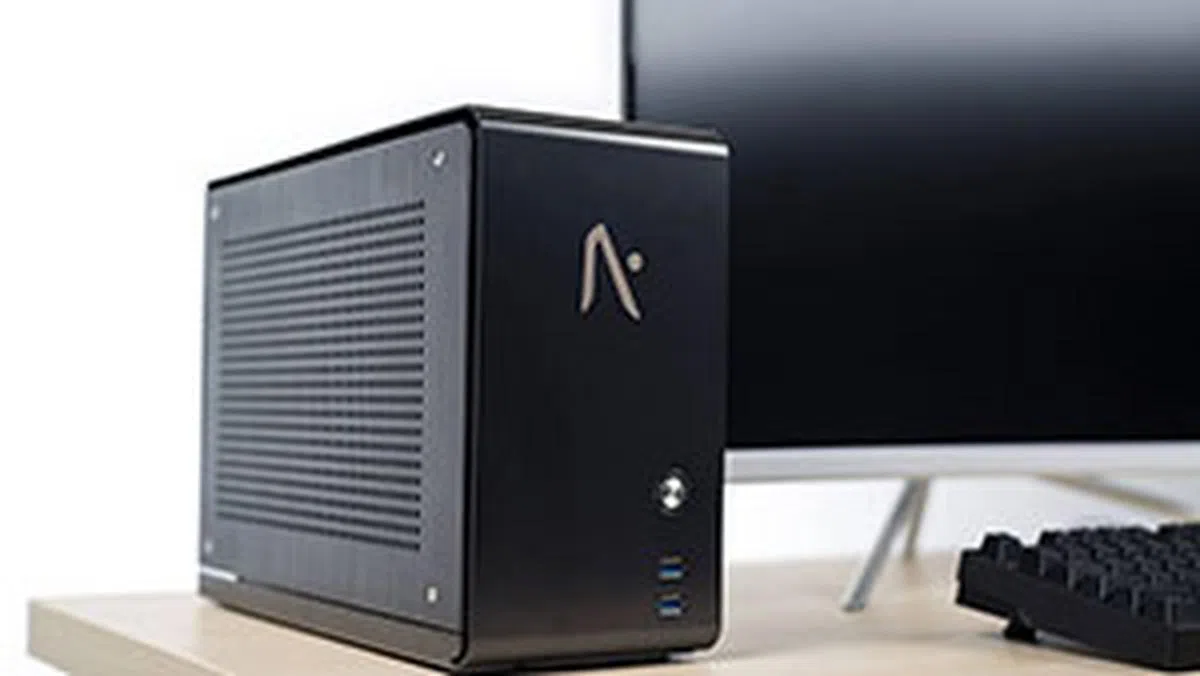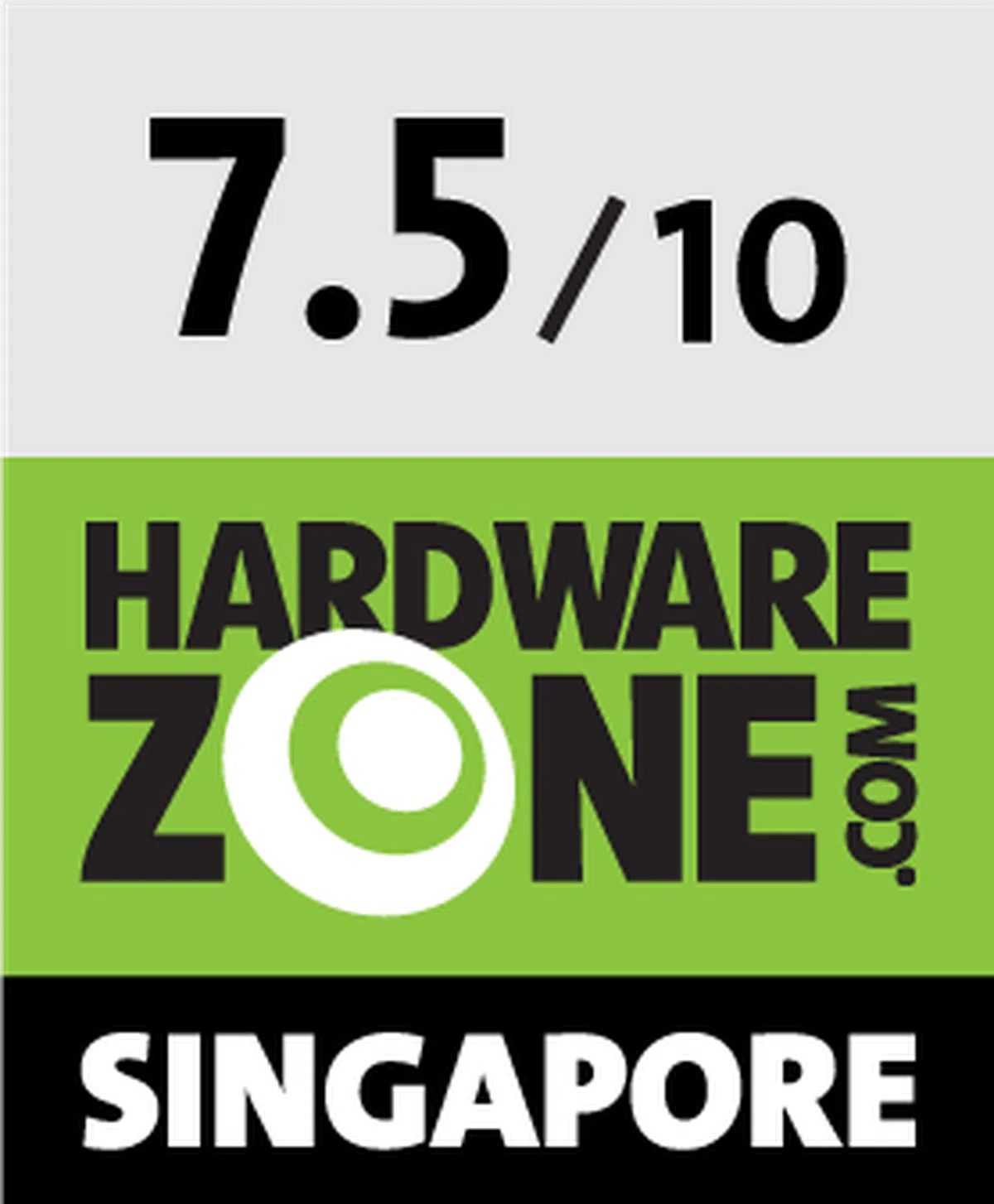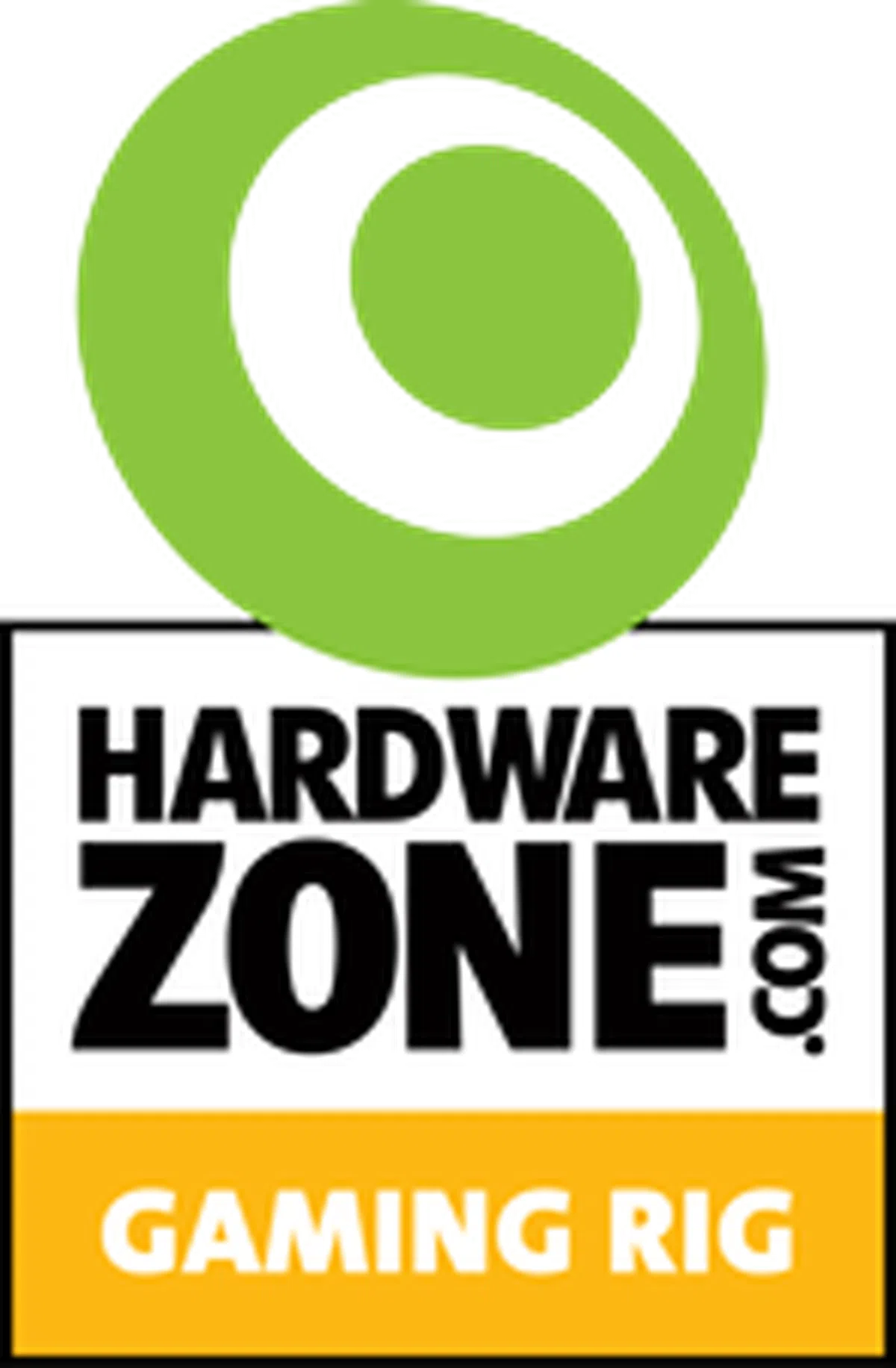Small form factor gaming desktop shootout: Punching above their weight
Gone are the days when there was a strong correlation between size and performance. The latest crop of small form factor gaming PCs are slim, small, and very, very powerful. We find out which one does it best.
Honey, I shrunk the desktops!

Looking for something small and powerful?
Smaller, slimmer, faster. That’s what everyone is trying to do today, and it’s a push that encompasses everything from consumer laptops to gaming desktops. NVIDIA’s Max-Q technology made it possible to put a GeForce GTX 1080 into a thin and portable design, and there’s been a similar effort to take a shrink ray to things on the desktop front.
Today’s small form factor PCs pack a ton of power into diminutive packages, and they’ll sit quite happily on even the most space-challenged desk. Certain folks may still prefer a hulking full tower PC, but the reality is that you don’t need to sacrifice power for a smaller footprint anymore.
The Zotac Magnus EN1070K is so small that it barely resembles a PC, but it is capable of blowing many a gaming notebook out of the water. Then there are systems like the Aftershock Impulse V2, which can take up to an NVIDIA GeForce GTX 1080 Ti, making it as powerful as any PC that requires three times the space.
However, it can be a little confusing when it comes to deciding which system to get, a task complicated by the fact that there are companies like Aftershock and Dreamcore in play. The latter two let you choose custom components from various hardware manufacturers, and it can be a little tough for the layman to decipher the difference between, say, an H110 and B250 motherboard.
On the other hand, brands like ASUS make things simpler by giving you fewer configurations to choose from.
That said, we’ve put together models from Aftershock, ASUS, Dreamcore, and Zotac to help you decide which machine is best for you.
Even if you do have the luxury of a sprawling desk, you might still appreciate being able to keep your desk looking cleaner and clutter-free with a smaller PC.
[hwzcompare]
[products=617943,617946,617950,617953]
[width=200]
[caption=Test desktops compared]
[showprices=1]
[/hwzcompare]
Aftershock Impulse V2

Don't let the unassuming looks of the Aftershock Impulse V2 fool you. This is one powerful PC.
Aftershock has had plenty of experience putting together custom desktop systems, but the Impulse is its first small form factor (SFF) desktop. The updated Impulse V2 is a diminutive, low-slung desktop with space for plenty of high-end components, and it gives you few reasons to wish for a full-sized tower PC.
In fact, you’ll be able to configure this system with an NVIDIA GeForce GTX 1080 Ti in there. The chassis is constructed entirely of aluminum alloy, and designed to be fully upgradeable. You won’t be stuck with your starting configuration as with certain pre-built systems, and you can freely upgrade components as you wish.

Each side panel is held in place by four screws.
The chassis design is unimposing, and the brushed metal finish conveys a look of simple elegance. The power button is encircled by a soft white LED when the machine is powered on, and it’s an overall tastefully constructed machine that should have no trouble fitting in in most homes and studies.
To be sure, the edges on the side panels are rough, and the fit isn’t quite flawless, but these are small imperfections that can be easily overlooked.

The chassis sports a nice brushed metal finish.
Four screws hold the side panels in place, but once removed, the panels pop right off to give you easy access to the innards. In order to accommodate all the hardware, the graphics card is connected to the motherboard by a riser cable and rotated 90 degrees from its usual orientation in a regular case.
One of the most attractive points about the Impulse is the internal 450W power supply unit. Other models such as the Dreamcore One have large external power bricks that take up a lot of space, but you’ll only have to contend with a single power cable here.

Here's a look at the insides of the machine. The power supply sits at the top right, and it's why there's no external power brick to deal with here.
Another thing we like is how stable the Impulse is. A lot of SFF systems tend to stand tall and feature precarious narrow bases, so they feel like they might fall over if you accidentally swing an arm into them. However, the Impulse is short and sturdy, and there’s little danger of that happening.
It also packs more than enough power to handle just about any game today. You won’t even have to worry about turning the settings down as the Zotac GeForce GTX 1070 Mini in our review configuration will chew through most titles with ease.

The design is clean and simple, a welcome departure from most gaming-oriented systems.
The CPU is a quad-core Intel Core i5-7500 processor (3.4GHz, 6MB L3 cache), which proves itself quite sufficient in games. If you’re not going to be working with heavily threaded applications that could benefit from Hyper-Threading, the Core i5 chip will keep you happy enough.
The Impulse comes equipped with an ASRock H110M-ITX/ac motherboard by default, although there are also options for higher-end B250 and H270 models. That said, the H110 chipset does come with certain compromises – you’re limited to just PCIe 2.0 lanes on the PCH, have fewer high-speed USB ports – but these generally aren’t things that most users are going to notice, especially on a compact system.
The ASRock board also doesn’t support M.2 SSDs, but Aftershock tells us that it’ll be updating the Impulse V2 with Intel’s 8th-generation processors and 300-series boards, the latter of which will take M.2 drives.

Unlike the Dreamcore One, the Impulse V2 uses Intel's stock cooler to cool the CPU.
Aftershock gives you the option to save money on the chipset, but the important thing is that the processor still provides the PCIe 3.0 lanes for the GPU, so performance isn’t going to be affected.
You also get two USB 3.1 (Gen 1) Type-A ports and four USB 2.0 ports on the rear, and two more USB 3.1 (Gen 1) ports at the front, so there should be enough connectors to go round. The ASRock motherboard also offers onboard Wi-Fi, so there’s that option should you need it.

There should be enough I/O ports for most people.
At S$1,840, the Impulse V2 is the most affordable of the lot we are comparing, but you wouldn’t know that just by looking at the performance it offers.
Our review unit came equipped with a 120GB SSD and 1TB HDD, which is smaller than what we reviewed from other brands, so that accounts for the lower price as well. But overall, it’s hard to argue against the Impulse V2 as providing great value and performance that rivals, or even outstrips, its more expensive competitors.
ASUS ROG GR8 II

The ASUS ROG GR8 II sports the ROG brand's signature Mayan-inspired design.
ASUS’ second-generation ROG GR8 II is a nice step up from the tiny machine that was the original GR8. For one, it is quite a bit larger – 4L versus 2.5L – than the GR8, which means that there’s now space for more powerful components.
The first GR8 featured a low-power U-series processor, but this year’s model manages to include a 65W Intel Core i7-7700 chip. That goes a long way toward improving performance, and you also get an NVIDIA GeForce GTX 1060 3GB in there.
However, the GPU is actually soldered onto the board, so it’s not upgradeable at all like the other PCs in this shootout. Performance is also slightly behind what you would get from a non-soldered GeForce GTX 1060 6GB. But all things considered, ASUS’ mini PC pumps out a decent amount of power, and it is still quite capable of handling games at 1080p.
Unfortunately, the 3GB of GDDR5 memory on the GPU can hold the system back at higher resolutions and graphics settings, so you probably won’t want to max out the settings to get a more fluid experience in more demanding titles.
Nevertheless, when it comes to future-proofing and upgradeability, the ROG GR8 II lags behind the competition by quite a bit. You’re really only able to access the RAM and storage, so while you can add in more memory and a larger drive, you’re going to be stuck with the same amount of CPU and graphics performance for the system’s lifetime.
It’s also slightly more troublesome to get at the insides of the system. You’ll first need to pry off one half of the top panel, and then remove four screws – three at the top and one at the bottom – to free up the side panel. Next, you’ll need to slide the panel sideways and toward the front of the system to get it off.

You'll need to pop off one half of the top panel in order to access the screws holding the side panel in place.
A peek inside also reveals the multi-segmented motherboard, which is a custom design to allow ASUS to fit its hardware into such a small chassis. Thermal performance is also one of the key challenges with such a compact system, and ASUS opted for a dual-chamber cooling system that attempts to compartmentalize the heat output of both the CPU and GPU.
Heat from the GPU is exhausted directly out the back of the case and is not recycled inside, while a separate fan blows hot air out vents at the top of the chassis from the CPU compartment.

Note the dual-chamber design on the inside.
The GR8 II is runs relatively quiet and cool, much to our relief. There is still an audible hum when it’s working particularly hard, but it’s nothing overly bothersome.
And because this is also an ASUS product, there’s bound to be RGB lighting thrown in somewhere. On the GR8 II, you get fancy lighting trails running down the front panel, but these don’t really do much for the design of the PC. That said, it supports ASUS’ Aura software, so it can be synchronized with other compatible gear, but you can also turn it off entirely for a more subtle look.

Lighting trails run down the front of the PC, making the ROG GR8 II one of the more visually striking small form factor systems.
There’s not exactly a ton of USB ports to go around, with just four on the rear – two USB 3.1 (Gen 1) Type-A, one USB 3.1 (Gen 2) Type-A, and one USB 3.1 (Gen 2) Type-C port – but this should still be enough for most users. In addition, there are two USB 3.1 (Gen 1) ports on the front, which is pretty convenient.

There are just enough USB ports for a mouse, keyboard, and a couple of other peripherals.
Our review unit came with an Intel Core i7-7700 (3.6GHz, 8MB L3 cache) processor and 16GB of DDR4-2400 RAM, double the amount of memory offered on the other systems tested here. The more powerful processor also gives it an edge in certain CPU-bound games such as Ashes of the Singularity, but because the vast majority of games today are GPU-limiting, this advantage isn’t going to be particularly noticeable most of the time.
And despite its small size, the desktop requires an external power brick for power, which detracts slightly from its claim to portability.

The desktop comes with a bulky external power brick.
The ROG GR8 II costs S$2,149, which sounds pretty reasonable in its own right. However, because you can get far better performance for around the same price or even less, the GR8 II becomes more difficult to recommend, unless you’re a fan of the ASUS brand or its particular aesthetic.
Dreamcore One

The Dreamcore One is all polish and elegance.
Dreamcore is the new kid on the block when it comes to boutique PCs. Its systems are sleek, polished, and quite dapper, and the good news is that it’s got the substance to back its looks up.
The Dreamcore One was the company’s first outing in the market, and it slots neatly into the SFF segment. It’s constructed entirely from aircraft-grade aluminum, and the eagle-eyed among you may notice that the chassis is actually a Not From Concentrate S4 Mini.
With a capacity of just 4.3L and standing at 63mm wide, Dreamcore’s PC will take up just a fraction of your desk. That’s great news if you already have a problem with clutter, but it will also fit in nicely on a spacious desk that you just want to keep clean.

The fit and finish of the chassis feels excellent.
The fit and finish of the machine feels excellent, and we can imagine that this would be a system you’d be happy to flaunt even in the living room.
The precision-cut vents on both sides of the case help improve air flow, which is always a concern in SFF desktops. That said, CPU – which is cooled by a Zalman CNPS2X cooler and not the stock Intel one – and GPU temperatures were well within the acceptable range, so it’s probably not something you need to worry about here.
In addition, Dreamcore has since replaced the Zalman cooler with a low-profile Noctua L9i unit, which is a nice step up over the stock Intel cooler used on the Aftershock. It also runs a few degrees cooler than the latter, so the upgraded cooling options are actually paying off.

Dreamcore has opted for a third-party cooler to provide more robust cooling for the CPU.
Our review unit came equipped with an MSI GeForce GTX 1070 Aero ITX, which comes with a small overclock over the reference specifications. It features a base clock of 1,531MHz and boost clock of 1,721MHz, making it the highest clocked GTX 1070 graphics card among all our tested systems.

The MSI card here is the highest clocked GeForce GTX 1070 of the lot.
The 400W PSU it ships with may be a bit of a stretch if you configure it for a GeForce GTX 1080 and up (although Dreamcore tells us it will work just fine), but you can also opt to upgrade things like the RAM, storage and CPU.
The default motherboard that comes with the Dreamcore One is an ASUS ROG Strix B250I Gaming, which comes with two M.2 SSD sockets so you can opt for two PCIe SSDs if you want. There’s more than enough USB ports for such a small system, and you get four USB 3.1 (Gen 1) Type-A and two USB 2.0 ports on the rear alone.
There are no front I/O ports, but this probably isn’t going to be much of a problem given that the system’s small size means that reaching behind isn’t as much of a hassle.
There’s support for 802.11ac Wi-Fi as well, so you won’t strictly be limited to a wired connection, even though most gamers will probably choose the latter anyway.
That said, we should note that our review unit came with an ASUS Maximus VIII Impact, so while performance numbers should be indicative what you’ll get with the ROG Strix B250I Gaming, we’re not able to show actual pictures of the actual I/O connectors. That said, here's an image of the board's connectors from ASUS' website:

There are a total of four USB 3.1 (Gen 1) ports at the rear. (Image Source: ASUS)
Ultimately, this is a compact, powerful system, but one drawback is the bulky external power brick, which you’ll have to find a way to accommodate on your desk. The power brick looks positively huge beside the slim machine, so it’s probably better off nestled discreetly on the floor.

The power brick is huge, make no mistake.
The Dreamcore One costs S$2,320, quite a bit more than the Aftershock Impulse V2, its direct competitor. The additional price premium nets you a more fully-featured Intel B250 motherboard, a third-party Noctua cooler, and a higher clocked MSI graphics card, but the fact remains that it’s still neck-and-neck with the Impulse V2 in our performance benchmarks.
Zotac Magnus EN1070K

This is the smallest PC in this shootout, but it's no less powerful.
The Zotac Magnus EN1070K is the smallest PC of the lot. In fact, it doesn’t look very much like a PC at all, but the power that this little beast packs belies its size. Still, cramming that much computing heft into that sliver of a chassis isn’t easy, and the price reflects that.
At S$2,437, this is the most expensive of the lot, but it’s a solid choice if your top priority is to have the smallest footprint possible. More impressively, it has managed to cram an NVIDIA GeForce GTX 1070 in there, although that takes the form of an MXM graphics module more commonly found on laptops.
This GeForce GTX 1070 is clocked lower than its full-sized desktop counterparts, with a 1,443MHz base clock and 1,645MHz boost clock, but the good news is that this doesn’t seem to result in that big of a performance gap in actual games. And because it’s not soldered on as on the ASUS ROG GR8 II, you’re technically able to upgrade it if you have the right components.
It also uses a socketed CPU, so that can be swapped out as well, but you’re still limited to a 35W Intel T-series processor to comply with the cooling capabilities of the system.

Here's a look at the machine on top of a magazine to give a better idea of how compact it is.
Nevertheless, the Magnus EN1070K is every bit a full-fledged gaming PC, and it’s quite a feat that it can go toe-to-toe with the other machines, which can even be thought of as quite large when compared to it. It measures a mere 210 x 203 x 62.2mm, and it’s built more in the mold of a no-nonsense business system.
The casing was designed to be taken apart easily, and the lid is held in place by two thumbscrews. Once you remove these, you can slide it off to give you access to the storage and the memory. The GPU is located on the reverse side, and that’ll require a bit more handywork to access.

You get easy access to the memory and storage once you remove the cover.
For such a small PC, there’s an impressive array of I/O ports. On the back, you’ll find two USB 3.0 and two USB 2.0 ports, in addition to a whopping four DisplayPort and HDMI connectors. It supports up to four external displays, so while the GeForce GTX 1070 won’t be able to cope with gaming across so many monitors, all the ingredients are in place for a sprawling workstation.
On top of that, there’s even dual Gigabit Ethernet ports that support teaming, a feature that none of the other PCs reviewed here offer.

The Zotac PC is the only one in this shootout to feature dual Gigabit LAN ports that support teaming.
Finally, there’s USB 3.1 (Gen 2) Type-A and Type-C ports on the front, so you’ll be able to hook up an external HDD or USB-C phone quite easily. When it comes to I/O options at least, the Magnus EN1070K gives you little reason to wish for a full-sized desktop.

Photographers will appreciate the SD card reader on the front.
Performance-wise, the GeForce GTX 1070 is very capable, and can comfortably handle up to QHD resolutions. However, the weaker quad-core Intel Core i5-7500T can hold the system back slightly in certain CPU-bound games such as Ashes of the Singularity, although the difference isn’t too significant.
That said, most games today have the GPU as the limiting factor, so this is pretty much a non-factor most of the time.
If you’re a gamer that, for some reason or another, doesn’t want to look like a gamer, the Magnus EN1070K is an excellent choice. It’s discreet, compact, and powerful, and is also wonderfully equipped to double as a workstation PC. It even offers plenty of features that the other larger systems don’t, such as dual LAN ports. One drawback is the large power brick that is almost the same size as the system itself, but at this point, it's pretty much par for the course with this category of products.

You'll have to find some place to stash the power brick.
It has more limited upgrade options, and you’ll have to pony up more for it’s uncannily small design, but if want you want is the most compact system possible, this is definitely one of the top options.
Performance benchmarks
Here’s a list of the benchmarks used:
- PCMark 10
- 3DMark (2013)
- VRMark
- Ashes of the Singularity
- Deus Ex: Mankind Divided
- Tom Clancy’s The Division
The desktops reviewed here are prime examples of compact, high-performance machines. However, with the exception of the ASUS ROG GR8 II, all the systems come equipped with an NVIDIA GeForce GTX 1070, so they perform quite similarly for the most part.
As a result, performance isn’t the only deciding factor, and things like design and price matter a lot as well.
[hwzcompare]
[products=617943,617946,617950,617953]
[width=200]
[caption=Test desktops compared]
[showprices=1]
[/hwzcompare]
PCMark 10 Extended
PCMark 10 Extended assesses the performance of systems in a variety of workloads, including basic computing tasks, productivity applications, digital content creation, and gaming. Compared to PCMark 8, it also adds in new test metrics, such as app startup times, which quantifies how long it takes to launch a variety of real-world apps, and a rendering and visualization workload to simulate professional graphics and engineering applications. In addition, existing workloads have been updated to reflect modern usage.
However, this is a balanced benchmark that takes into account performance in varied scenarios, and as such does not highlight the strengths of these gaming systems. But since there’s a good chance that you’ll be using one of these desktops for more than just gaming, the figures here are of interest as well.
The Aftershock Impulse V2 inched ahead here in terms of the overall score, but the Dreamcore and ASUS PCs weren’t far behind. The Zotac lagged behind more, probably due to its lower power Intel T-series CPU. The latter has better graphics performance than the ASUS system, but PCMark 10 also takes into account CPU performance.
For instance, a look at the score breakdown shows how the ASUS ROG GR8 II’s more powerful Core i7-7700 processor helped give it an advantage in basic tasks and productivity applications, only for it to fall behind in the Gaming workloads because of its weaker GeForce GTX 1060 3GB GPU.


3DMark (2013)
3DMark is a more relevant assessment of gaming performance, and it puts the system through a range of graphics and computational performance tests at different resolutions, starting at 1080p and going all the way up to 4K.
Unsurprisingly, the ASUS ROG GR8 II trailed the rest by a fair amount because of its soldered GeForce GTX 1060 3GB, while the other three machines performed more closely. In fact, the Dreamcore One was a good 29 per cent faster than the ROG GR8 II, so that’s quite a sizeable performance gap.
This difference widened to a yawning 55 per cent in the 4K Fire Strike Extreme benchmark, so the ROG GR8 II really isn’t 4K gaming material, as the other gaming benchmarks will show as well.
Having said that, the Zotac wasn’t quite on the level of the Aftershock Impulse V2 and Dreamcore One either, likely due to the lower base and boost clocks of its MXM graphics module and weaker 35W CPU.

VRMark
Futuremark’s VRMark benchmark is designed to assess a PC’s ability to handle high-performance headsets like the HTC Vive and Oculus Rift. If a PC passes the Orange Room test, it is ready for the latter two systems. We’ve also included a separate graph with the average frame rates to show how far they exceed the target frame rate of 109FPS.
All the systems passed the test quite handily, although there was once again quite a large difference between the ASUS system and everyone else. The Zotac sort of fell in the middle, where it was around 7 per cent slower than the Dreamcore One.


Ashes of the Singularity
Ashes of the Singularity is a demanding real-time strategy game that puts thousands of units on screen, and it’s capable of pushing even the most powerful GPUs. However, at the lower resolutions and settings, it’s actually one of the few CPU-bound games out there.
This was particularly evident at High settings and at both the 1080p and 1440p resolutions, where the Core i7-7700 on the ASUS ROG GR8 II powered it to a nice lead over its competitors.
However, once you start to ramp up the graphics settings, the GPU becomes more of a limiting factor, and the ASUS desktop once again fell behind. Its shortcomings are particularly clear at the 4K resolution, where it’s abundantly clear that it’s not cut out for gaming at that resolution.
It’s also worth noting that none of the systems exceeded 60FPS at even the lowest settings, so if you’re going to play this game, you’ll need both a good CPU and graphics card.

Deus Ex: Mankind Divided
Deus Ex: Mankind Divided can really push a system with the settings and resolutions cranked up, but the GeForce GTX 1070 in the Aftershock, Dreamcore, and Zotac PCs handled it quite well. There aren’t really any significant differences between those three machines, and it’s impressive to see how well the Zotac card performed given its diminutive size.
Unfortunately, the ASUS machine was in a different league entirely, and it couldn’t quite keep up again because of its weaker card. The performance differences are quite large, where the ROG GR8 II was up to 35 per cent slower in some cases.

Tom Clancy’s The Division
We see more of the same in The Division, where the Aftershock, Dreamcore and Zotac systems posted very similar results and the ASUS continued to trail behind. At 1080p and High settings, the performance gap was roughly 39 per cent.
At High settings, the GeForce GTX 1070-equipped systems also managed to post relatively playable frame rates at a 4K resolution, so they’re really no slouch at all despite their compact form factors.

Temperature and power consumption
Temperature
For our temperature tests, we ran 40 loops of 3DMark’s Fire Strike Extreme stress test and took the maximum CPU and GPU temperature readings.
As two of the larger systems, the Aftershock Impulse V2 and Dreamcore One posted the coolest CPU temperatures. In fact, the Dreamcore One managed to edge ahead thanks to its use of the aftermarket Zalman cooler (newer units now use a Noctua model).
GPU temperatures across the different machines were much closer to each other, although the MSI graphics card on the Dreamcore again managed the coolest temperatures.

Power consumption
Our power consumption figures reflect the peak system power draw from a wall outlet, as measured during 3DMark’s Fire Strike Extreme benchmark. The idle numbers are for power consumption when the systems are idling at desktop.
Unsurprisingly, both the Aftershock Impulse V2 and Dreamcore One drew the most power, thanks to their full-fledged desktop-class components. On the other hand, the ASUS ROG GR8 II uses a soldered NVIDIA GeForce GTX 1060 3GB card, while the Zotac uses a 35W T-series processor, so they naturally weren’t as power hungry.

And the best mini gaming PC is…
Small form factor gaming PCs are an up and coming niche that looks like it could have considerable mass appeal. We’re at the point in system and hardware design where it’s possible to fit the power of a full-sized desktop into a chassis just a fraction of the size, so there are really few trade-offs if you decide to go this route.
The systems reviewed here are testament to the fact that a small and powerful system is entirely possible today. However, what’s interesting is that they all go about doing it in slightly different ways.
There’s the Zotac for those who want the smallest possible footprint, and the ASUS for those who want a little more bling to their system. On the other hand, the Aftershock and Dreamcore machines favor the DIY route, with plenty more customization options and performance.
Aftershock Impulse V2

The Aftershock Impulse V2 is a smartly designed mini-ITX PC with the power of a full-fledged gaming tower. It makes few compromises in terms of specifications and performance, and manages to maintain full upgradeability, with the freedom to swap out things like the GPU, memory, and storage drives. It even avoids one of the pitfalls of systems in this category by fitting the power supply unit in the chassis itself, so there’s no need to contend with a clunky power brick.
But best of all is the fact that it is quite a bit cheaper than the Dreamcore One while offering very similar specifications. The Dreamcore has an Intel B250 board versus the H110 one on the Aftershock, a higher clocked MSI GPU, and a larger 250GB SSD, but those differences aren’t that apparent in real-world usage. As a result, the Aftershock Impulse V2 comes across as an overall better choice at an attractive S$1,840, and also saves you the trouble of dealing with a bulky power adapter. This may not be the fastest system you can get, but it's definitely the most well-rounded option from a performance and value perspective. As such, the Aftershock Impulse V2 gets our nod for the best overall winner of this shootout.
ASUS ROG GR8 II

The ASUS ROG GR8 II sits in an awkward position here. It’s a reasonably capable gaming desktop, but it still falls short when compared to the competition. At S$2,149, it’s not unreasonably expensive, but it still fails to match its rivals in terms of specifications and price. The Aftershock Impulse V2 is cheaper, but it’s also more powerful, has more upgrade options, and boasts a better chassis design with its integrated power supply. The ROG GR8 II’s most striking feature would probably be its customizable RGB lighting, but unless you must have that, it’s difficult to overlook the limitations of the soldered NVIDIA GeForce GTX 1060 3GB graphics card. Ultimately, it lacks truly compelling features to help it stand out, despite coming with an Intel Core i7-7700 processor, the best CPU of the lot.
Dreamcore One

The Dreamcore One is a top contender for first place. It has all the right ingredients, with a good mix of upgradeability, performance, and an attractive design. It also distinguishes itself with higher-end components than the Aftershock Impulse V2, such as a third-party Noctua cooler (instead of Intel’s stock cooler), a higher-clocked MSI graphics card, and an Intel B250 motherboard. In addition, it arguably has a more compact footprint, with a narrow base that will sit comfortably on the most space constrained desk. The problem is that it is also more expensive than the Impulse V2 at S$2,320, and isn’t significantly faster. Power users might appreciate the additional expansion options that the B250 chipset offers, but most folks probably won’t notice the difference. That said, the Dreamcore One remains a solid choice, especially if its particular design appeals to you.
Having said that, we decided to award it our Gaming Rig award as an acknowledgement of its thoughtful selection of better performing components. It includes things like the aftermarket cooler by default, and this attention to detail is testament to its focus on performance.
Zotac Magnus EN1070K

Zotac’s mini PC may be the most interesting of them all. It’s absolutely tiny, and yet packs enough performance and I/O ports to rival the likes of the Aftershock and Dreamcore machines. That’s extremely impressive, but it also comes at a price. At S$2,437, this is the most expensive system in this shootout, and it caters to a very specific breed of users. This means those who absolutely must have a powerful system with the smallest possible footprint, and who are willing to put up with its limitations. For example, it uses an MXM graphics module and a 35W T-series CPU, so upgrade options are limited, even though you can take it apart quite easily. Fortunately, this system also offers the largest SSD of the lot at 500GB, so that scores it some additional points, especially considering how small it is compared to it others.
While the Magnus EN1070K may not be the fastest or most upgradeable system, its tiny size means it stands in a class of its own. It takes the term small form factor desktop to another level that the other systems cannot match, and for a PC that barely takes up any space on your desk, there's simply few others like it. As a result, we're giving it our Editor's Choice award because of the outstanding complement of features and performance it offers in such a compact chassis.
Aftershock Impulse V2 | ASUS ROG GR8 II | Dreamcore One | Zotac Magnus EN1070K | |
Design | 8.5 | 7.5 | 8.0 | 9.0 |
Features | 8.0 | 8.0 | 8.5 | 8.5 |
Performance | 8.5 | 7.5 | 8.5 | 8.5 |
Value | 9.0 | 7.5 | 8.0 | 8.0 |
Overall | 8.5 | 7.5 | 8.5 | 8.5 |
Price (S$) | $1,840 | $2,149 | $2,320 | $2,437 |
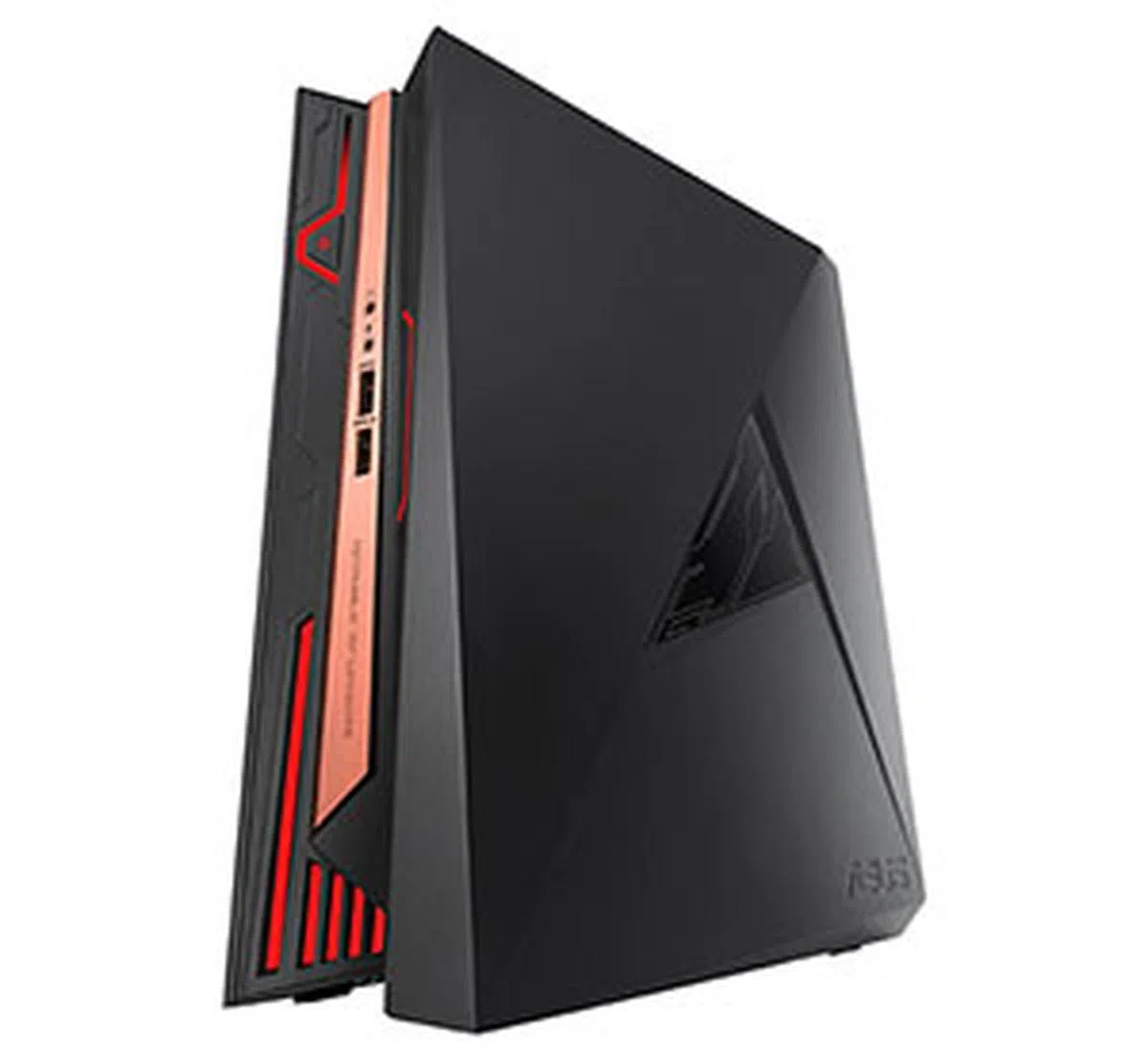 | |
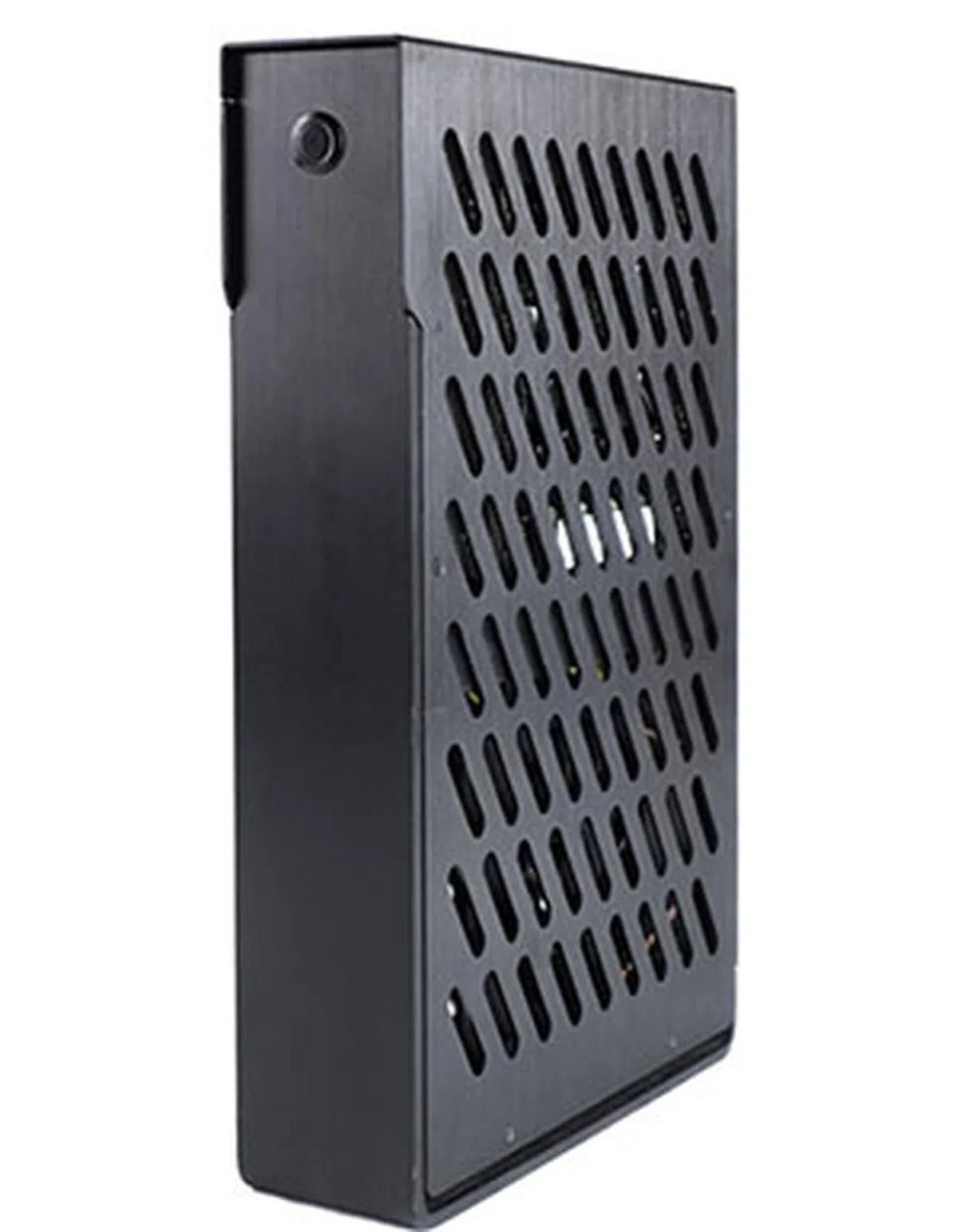 | |
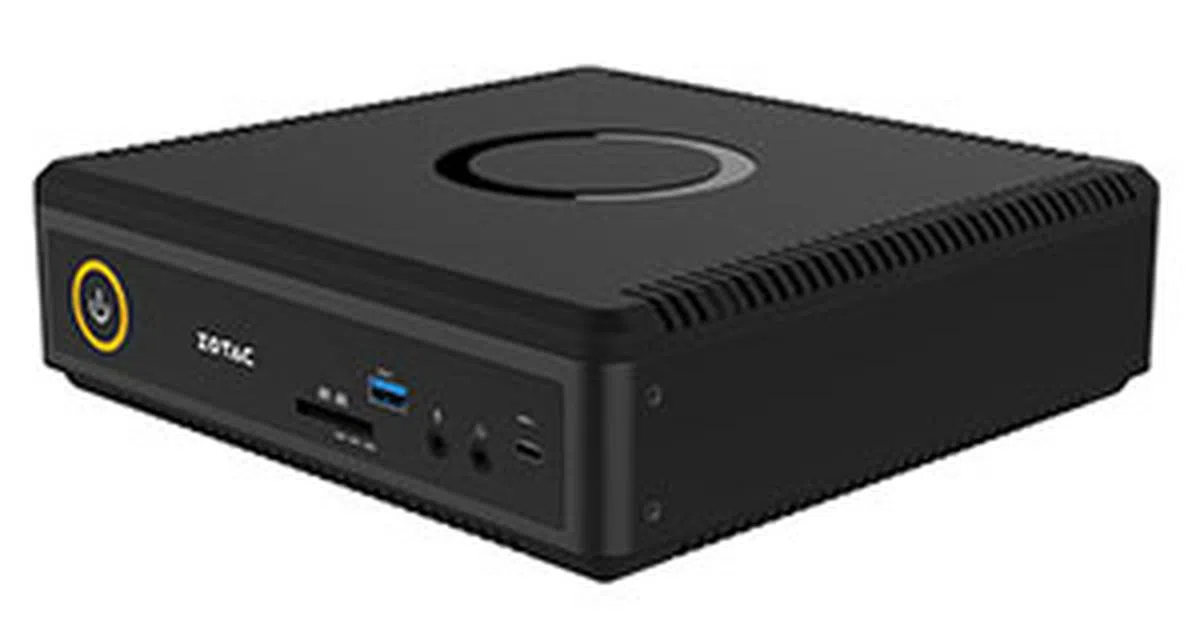 |
